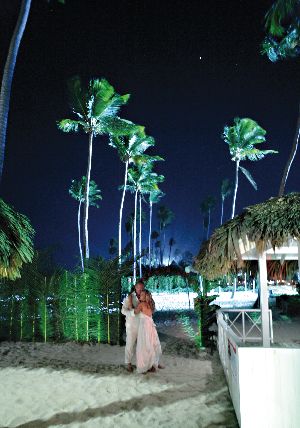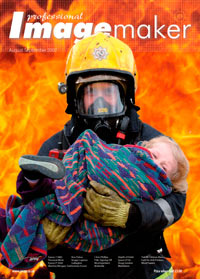articles/Weddings/detailsdetails-page1
Details, Details, and More Importantly Sexy Details - part 1 of 1 2
Published 01/08/2007

By Douglas Gordon
Every time I lecture I am asked the same question. That question is, 'what is the most important part of the wedding to photograph?' Is it the bride or the groom or the family? As that is all-important, today's bride demands the photos that make the wedding tick. Those photos are simple. They are the details. How much time do brides and grooms spend picking bouquets, jewellery, linens, undergarments, etc? These are the things that make the story, and more importantly make the money. With that in mind I will also take you on a small trip into my world of Posed Photojournalism. That's right; I said it. I believe that the world's best candid photos are posed. How is that possible, you ask? Simple I have basically taken all the great PJ (photo journalism) photos I have ever seen, and tried to find a way to pose them. Why is that, you ask? The reason is simple. I can now guarantee the shot every time, and even better, I can guarantee it is perfect. As a PJ artist I cannot do this. The odds are always stacked against me for various reasons.
By posing these photos I ensure better lighting and more importantly good facial angling.
I think it is important to emphasis the story of the wedding. By posing, I can do this more efficiently. Let me explain how and show how with some photos from a recent wedding I did in the Dominican Republic.
As I said I believe details are key. All of these photos are shot with my Canon 1Ds Mark II and my 70-200mm f2.8 L-series lens. In the beginning series you see how I use the gettingready images to really start the story and more importantly show the sexy side of the wedding.
These photos are by far our hottest sellers and surprisingly over the last month since it's release our most popular selling educational DVD The Sexy Bride.
In the first photo, you will see how I focus on the bride's neckline as well as the jewellery her husband gave her as a wedding gift.
I have posed her body straight to the camera while turning her head away from the camera to add the element of camera tilt to create a more dramatic look.
As with all of my shots of this type I try to shoot on full zoom with the lens wide open at 2.8. This creates a shallow depth of field and more importantly makes it almost impossible to place the image.

I shoot all of the photos with ambient light. It is much softer and really creates a pleasant look. IThese next ones really will get you.
In the next three poses I want to simulate the bride and dad coming down the aisle. You may, 'ask why pose?' Again, lighting and perfecting. How do I do it? As we all know, 99 per cent of the time, the dad walks down the aisle on the bride's right - with the exception of a few Jewish affairs.
There is basically only a couple of ways they will walk down the aisle. It will either be holding hands or most times the bride holding dad's arm.
I usually do these photos right before the ceremony when they will obviously know how they are walking.
As a portrait photographer I am taught to see the whole image, as a PJ artist I am taught to section off the photo seeing particular emotional spots - like the hands.
So in this image I chose to focus on the bride's grip on her dad and the feeling between them.
This photo, as well as the other two, will be plugged into the proofs, as part of a sequence with the traditional shot, walking into the church.
Again the key is story telling, I am trying to give the impression when that there were two or three photographers there, rather than just me.
In the next image, I again focus on hands, pushing their bodies together and bringing dad's hands to the veil. Notice on all these images - camera tilt.
You are currently on page 1
- Details, Details, and More Importantly Sexy Details page 1
- Details, Details, and More Importantly Sexy Details page 2
1st Published 01/08/2007
last update 09/12/2022 14:53:17
More Weddings Articles
There are 0 days to get ready for The Society of Photographers Convention and Trade Show at The Novotel London West, Hammersmith ...
which starts on Wednesday 15th January 2025





